Life outside of U-M, in Plymouth and beyond. Continue reading
I can remember a lot about the three years that Sue and I lived in our apartment on Sheldon Rd. in Plymouth, but in some cases the chronology is a little fuzzy. I have consulted with Sue on many of these items, but grey areas persist.

One strange and memorable aspect of life in that apartment concerned light bulbs. The train tracks just to the north of the house were, in those years, quite active. Long freight trains rumbled through at a rapid pace day and night. Whenever a train passed, the entire building shook as if in a mild earthquake. Nothing was ever damaged except our incandescent light bulbs. We did not have a great number of lamps, but we routinely needed to replace bulbs at least monthly.
Fortunately, our electric company, Detroit Edison, had a policy of providing free light bulbs1 to its customers. So, we would just pick up a couple at their local store every time that we were in the vicinity.
Pets: We brought Puca, Sue’s boa constrictor, to Plymouth from Connecticut. He lived in his cage in the bookshelves in the living room throughout our time in Plymouth.
Having a snake means that one must also have a supply of animals to feed it. We fed Puca mice. We found a very nice pet store in Northville, the town immediately north of Plymouth. It was only a ten-minute drive unless, of course, a train was coming through.
On our first visit we bought a few mice to feed to Puca. We needed a place to keep them; he never ate more than one. We bought a fish tank with a lid of wire mesh. We also needed some wood shavings for the floor, a water bottle, and some Purina Mouse Chow2.
The athleticism of the mice amazed me. They looked fat and slow, but their appearance was deceptive. Any mouse could easily jump from the floor of the cage to the lid—a leap of about a foot. It could at the same time whip around and grab the lid with all four paws in one smooth motion. They appeared to just will themselves up.
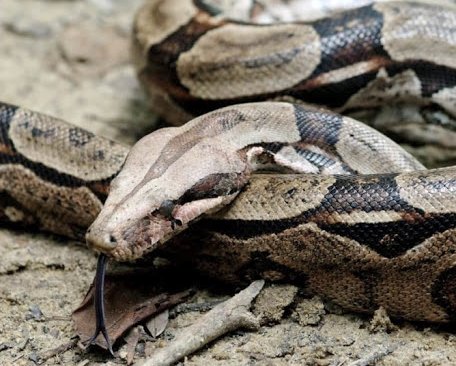
Keeping a few mice around was acceptable as long as Puca was eating. However, he was unpredictable in that regard. We knew that boa constrictors generally hibernated in the winter. They drank a little water, but they were very lethargic. Puca’s cage had a heat lamp, but it seemed that he somehow knew when it was time to hibernate.
We expected Puca to be hungry pretty much all of the time in the other three seasons, but that was not always the case. Fairly often he refused to eat.
The thing about mice is that if you have a male and a female, you almost always have quite a few more before you know it. Although they are born blind and hairless, mice nurse for only twenty days. They can be fertile at an age of four to six weeks. The gestation period is only twenty days. The litter size can be up to thirteen! Pregnant mice can barely walk on the last few days. One of our mice, named Mellow, had a litter of twelve, and all of the pups survived.
So, we soon needed more cages. We bought a twenty-gallon tank with a lid of wire mesh and a Deluxe Habitrail. We acquired a small wire cage that we used to isolate pregnant females. Fortunately it is easy to determine the sex of mice, and so I was generally able to keep the breeding down. However, over one winter our mouse population still rose to fifty-three.
I kept careful records of the mice. I was not doing research. I just likes to keep records. I assigned a name to each mouse and gave him/her a file card that documented date of birth or purchase, appearance (I tried to buy mice with interesting colors and patterns), parentage, and date fed to Puca (or other demise).
Occasionally a mouse escaped. I chased the each fugitive until I had it cornered. Then I picked it up by the tail. Their only weakness was their inability to hide their tails, and I never gave up.
Once a mouse on the lam ran—I swear that I saw this happen—through the wire cage that we used as a maternity ward. Less than a half inch separated the vertical bars on this cage, but the mouse did not even seem to slow down when he passed between them.
To feed Puca I would grab a mouse by the tail. I would wait for an occasion in which he seemed active but not on the prowl. He would almost always flick his tongue, his best sense, whenever I opened the door to the cage. If he was interested in eating he would slowly stalk the mouse. When he struck he seldom missed. He then squeezed the life out of the mouse and swallowed it head-first. If he was skinny (which he usually was), you could see the mouse move through his body.
Was I afraid of Puca? No, not at all. We sometimes took him out, but we never let him roam. He was too good at hiding, and once he got himself wrapped around something, it was very difficult to pry him loose. My biggest fear was that he would somehow get into our heater.
Actually, I was more afraid of the mice than Puca. Puca struck at my arm once. It felt like getting punched. His teeth also made small puncture wounds, but there was not a lot of pain. The wounds did not last long.
I was also bit by a mouse once, and it was MUCH worse. I was holding the little critter by the tail, as I had done dozens of times. This one must have had great abs because he whipped his head up to my hand and glommed onto the loose skin between my thumb and forefinger with all four of his oversized front teeth. The bite really hurt, and he would not let go no matter how much I shook my hand. I whacked my hand up against a wall three times before he let go. When he hit the floor he sped off, but eventually I caught him.
The area of the bite was sore for a few days, but there was no permanent damage.
Sue and I often drove to the pet store in Northville even when we had no need of mice. We looked at all the potential pets for sale there. In 1976 we decided to buy a guinea pig. We picked out a Peruvian (long hair) with a very interesting color that involved a mix of silver and light brown hair. We named him after the Charlie Haggers3 character on Mary Hartman, Mary Hartman, which we watched every night in 1976-1977. The guinea pig’s full name was Carlos Cavia y Vega, but we called him Charlie.
In those days I loved to bake in the sun in the backyard of the apartment house. During the summer of 1976 I brought Charlie with me outside, where I would liked to read a book or work on something. I had removed the bottom and lid to a large cardboard box to provide Charlie with an open-air fenced in place to enjoy the outdoors. It may sound boring, but this array of fresh edible greens was like paradise to a guinea pig.
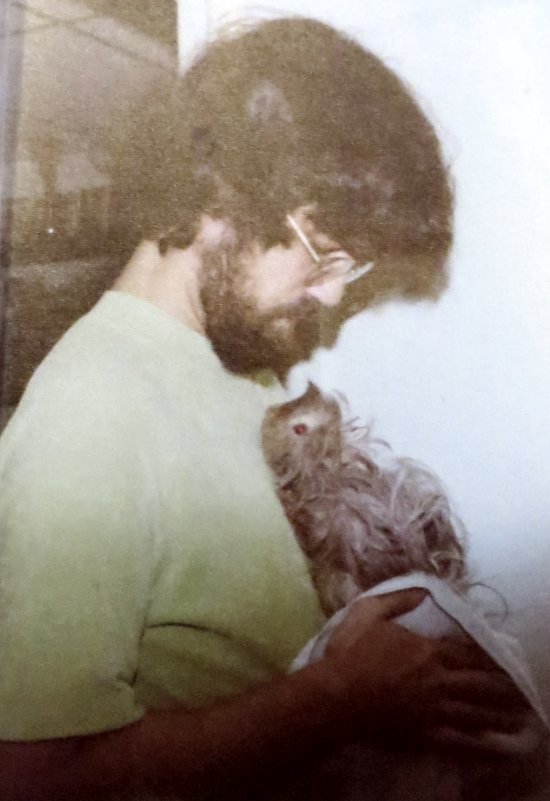
In the apartment we kept Charlie in a twenty-gallon fish tank for a while. I decided to build a cage for him and a potential family to fit on the barnboard shelves. It was a split-level, and it featured a ramp that, when lowered, let them roam in the living room and return home when they wanted. They were very well-behaved. They were not fast; their only defense mechanism in the wild was to hide in a hole or cave, and, to tell the truth, these long-haired guinea pigs had not been in the wild in many generations.
I thought that it would be nice to take Charlie for “walkies”, as Barbara Woodhouse called them. Charlie had very short legs, of course. I did not anticipate that we would cover a lot of ground. I bought a very cheap leash for Charlie, and he did not seem to mind it. I put the leash on him and carried him outside. He made a beeline for the nearest dandelion. He spent a few minutes there until he had devoured all of the greens. He then moved to the next dandelion about six inches away, and he spent the next few minutes chomping on the delights that it had to offer. I terminated our walkie without ever doing more than shuffling my feet.
When the guinea pig mansion was completed, Sue and I decided to get Charlie a companion. Her name, of course, was Loretta. We decided on the name before we ever departed for the pet store.
As soon as we reached the store we walked to the section in which they kept the guinea pigs. They usually had between five and fifteen of them, a very good selection. Most people do not realize that guinea pigs whistle when they get excited. I was quite adept at emulating a guinea pig whistle, and I always exhibited this talent at the store. Pretty soon the whole clan would get in the act. All of the customer would come over to the guinea pig area to witness the excitement.
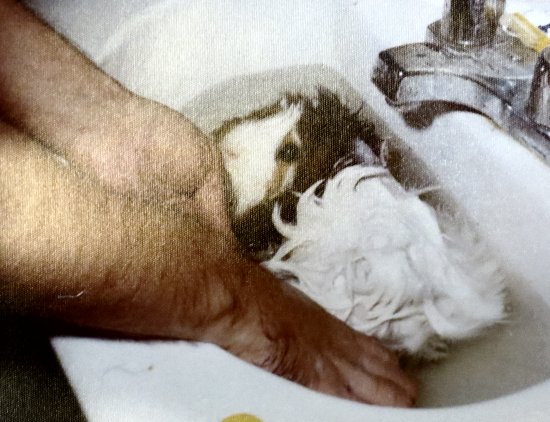
We picked out a suitable Loretta and brought her home with us. She got along fine with Charlie, and before too long she had a litter of three.
Guinea pigs and mice are both rodents, but the similarity ends there. Loretta carried her babies for about two months. The last few days we could see them moving around inside her. They came out with their eyes ope, a full set of teeth, and beautiful coats. By the time that we saw them they were on their feet and moving about.
Another important difference between mice and guinea pigs: The best way to pick up mice is by the tail. However, NEVER pick up a guinea pig by the tail; its eyes will fall out.
Guinea pig babies certainly must rank with the cutest animals ever. When we let down the ramp Loretta would go for a walk in the living room, and the babies followed her in a line nose-to-tail. To top it off they all made what I called “monk-monk” noises. I don’t know how else to describe them. Adults never made these noises. I am positive that Sue took some photos of this furry little train, but I cannot find them.
The big trip: Sue and I took no vacations during the years that we lived in Plymouth. In the fall of 1976 we learned that Patti Lewonczyk and Tom Corcoran were getting married in Newington, CT, on January 7, 1977. They invited us to the wedding, and we decided to go. We planned to fly to Kansas City5 to spend Christmas with my family in Leawood, and then fly back to Hartford. We then would drive to Enfield to celebrate a late Christmas and New Year’s with Sue’s family. Then we would return to Michigan after the wedding.
I don’t honestly remember too much about the trip to KC, but Sue took a number of photos. My sister Jamie was apparently not there. She was nineteen or twenty at the time. I think that she had left college and moved somewhere. She also got married around this time if my math is correct. Father Joe drove down from Kelly, KS.So, there were six of us (counting Molly the dog) for Christmas.
From the photos it appears that Sue and I spent most of our time at my parents’ house playing with Molly, whom I have always considered to be Jamie’s dog. My dad, who had no use for live animals of any description, was forced into several pictures that included Molly.
My parents and I certainly attended mass on Christmas day. I am almost positive that I was still going to church regularly in late 1976. If not, I definitely was not ready to tell my parents. Sue might have attended out of courtesy to my parents. I can’t think of any other reason for her to be wearing such a nice dress.
The whole experience was more than a little awkward; things were always awkward in that house. My parents were both devout Catholics from birth. They had raised me to be one, too, but, after a very promising start, I failed to meet their expectations. They never said anything, but it was in the air.

From KC we flew back to Metro Airport in Detroit.
Shortly thereafter we drove to Enfield in Sue’s Dodge Colt. We must have gone through Ohio and Pennsylvania because we brought with us several guinea pigs—Charlie, Loretta, and some of their offspring. They occupied the back seat in at least two cages, including the split-level house that I built for them.
I have almost no recollection at all of this part of the visit. Sue’s photographs indicate that gifts were exchanged, and the guinea pigs always seemed to be right in the middle of the festivities.
Although Tom and Patti were not very religious, their nuptials were performed at the Catholic church in Newfield. That was what people whose parents were Catholic did in the seventies. We attended the ceremony, but I don’t remember anything about it. In the Catholic church the wedding ceremonies are generally part of a mass. So, a large portion of the time was devoted to the usual rites.
Many of our friends at the Hartford were there, and, as far as I know, they all attended the reception. I only remember one detail. At the meal Sue and I were seated near Jim and Ann Cochran. Someone asked me about what I had been doing. I told them how thrilled that Wayne, Mitch, and I were the previous year to make it to the National Debate Tournament in Boston. I also probably told them about Don and Stewart. I may have told a few debate stories, too.
An hour or so after the meal Ann came up to me and said, “You don’t even know what you’ve got, do you?”
I didn’t think I had anything, but my last physical was when I left the Army almost five years earlier. Before I could relay this information, she put her arms around my neck and planted a huge smacker on my face. You could have knocked me over with a feather. Later, I saw her sweet talking a guy that I had never met.
I think that there must have been a second round of festivities at the 345 Club. Quite a few photos show people without suits and ties in rooms with old wallpaper and antebellum furniture.
The following photos are at the 345 Club.
Fashion note: Yes, there was probably still a suit in my closet, and I certainly had some ties. However, as an impoverished graduate student, I was well within my rights to wear to any “formal occasion” my trusty corduroy jacket over a bulky wool sweater. Besides, it was cold.
The first half of the drive back to Plymouth was something of an adventure. As we reached the northern section of the Pocono Mountains it started to snow. Thereafter we saw very few cars. Sue was driving, and I was nervous. At the time this was the scariest drive I had ever been on, but that record lasted less than a month.
We finally arrived at a motel near Scranton, and we obtained a room. The motel had a no-pets policy, but we snuck the guinea pigs and their cages into the room. All four had long coats, but they were not used to cold weather.
It was sunny and bright the next morning, and the drive to Plymouth was easy.
Sue’s jobs: Sue’s first job after we arrived in Plymouth in 1974 was a very convenient one. It was in the center of Plymouth, only a few blocks from our apartment. The company was a business association for insurance companies in Michigan. I am not sure what her responsibilities entailed. She was called a “correspondent”.
Sue liked this job, but her employers considered her a potential rabble-rouser. Unions were still very big in Michigan, and management did not want anyone who might undertake to bring one to the organization. They asked her to leave.
She found a job pretty quickly with a company named Michigan Basic. This company developed software for IBM mini-computers, such as the System/3. Sue’s boss’s name was Chuck Glore. Sue learned from him how to program in RPG (Report Program Generator).
I don’t remember where the office was, but I recall accompanying Sue there on a few evenings or weekends. I was very interested in the concept of computers that a small company could program themselves.
After a while, Sue and Chuck had a falling out over something. It might have been because of a recession in the auto industry. Since nearly every company in southeast Michigan was heavily dependent on the auto companies, at least indirectly, all businesses suffered. At any rate, Sue was back in the job market, but she now had a marketable skill.
She took a job as a placement for an employment agency. In many ways it was a perfect job for Sue. She has always loved to talk on the phone, she enjoys introducing people to one another, and she really believed that there was a seat for every butt.
Unfortunately, the local economy being what it was at the time, there were far more butts than seats. Sue often came back to the apartment crying in frustration.
One of the few thriving companies in Detroit was Brothers Specifications. As “white flight” took hold in Detroit a lot of fairly nice houses were abandoned. The federal department of Housing and Urban Development hired the company to inspect the abandoned houses and to assess the cost, if any, of making the houses habitable. The employment agency that Sue worked for had been contacted by Frank Yee, the computer guy at Brothers. Sue tried to convince him to hire one of her job-seekers. He told her that he would rather hire her than the applicant whom she was representing.
Sue took Frank up on his offer. She liked this job a lot. She got along well with the people there, and there was a very active social life, which was right up Sue’s alley. The details and many photos will be posted in the Detroit section of the blog.
Visitors: Sue has told me that her peripatetic grandmother, Molly Locke, visited our apartment and slept on the waterbed. She was on a trip to western Michigan to visit the family of her son Bob Locke or on the way back to Enfield. I must have been away on a debate trip. She slept on our waterbed but did not enjoy it much. This visit probably occurred in the spring or fall. I would have known about it in the summer, and tourism in Michigan in winter is seldom advisable.
Sue also told me that her female cousins (her Uncle Bob’s daughters) also visited her while I was on a debate trip.
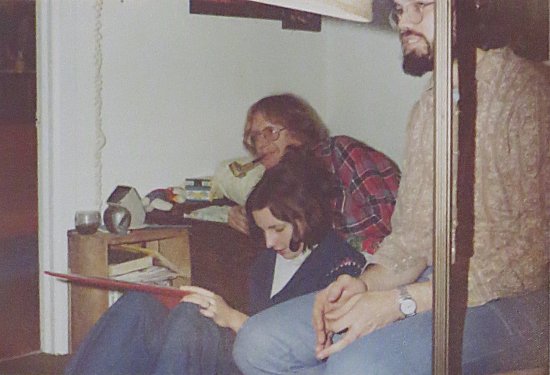
I reckon that our other visitors arrived in late winter or early spring of 1977. My sister Jamie drove up with, I think, her new husband Mark. I remember absolutely nothing about this visit, but Sue took a photo of them, and I am in the picture. I suspect that we talked mostly about our pets. We were very serious pet owners at the time.
They stayed overnight on the waterbed. I think that they left the next day.
Entertainment: Sue has always loved live music. She found a bar named The Crows Nest inside the Mayflower Hotel, which was right in the center of Plymouth. It often featured live musicians. She had two favorite singers, a blonde whose name was Jane or Janet, and Elaine Philpot, who had darker hair and claimed to be 5’12” tall.
Elaine had an interesting song that she used for sing-alongs. The title is “Piccolomini”6. Here are the lyrics:
Piccolomini Piccolomini Piccolomini Picco- Lomini Piccolomini Piccolomini Piccolomini Pi- Ccolomini Piccolomini Piccolomini Piccolomini (repeat faster and faster until totally out of breath).
I remember Elaine best for her pet waterfowl named Kensington. I thought of him as a large duck; Sue remembers a goose. She is probably right.
Whatever he was, he enjoyed biting people’s bare legs. He brazenly walked up to strangers, turned his head ninety degree, opened his beak and thrust at the exposed flesh. When he hit the target, he twisted his head back to the upright position before releasing. This really hurt.
Our other favorite hangout was a bar in the center of Ann Arbor called, if memory serves, Floyd’s. We went there several times to listen to the Red Mountain String Band, a bunch of people who occasionally came up to God’s country to perform before returning to “that school down south” in Columbus. At least once Don Huprich joined us at Floyd’s.
They were very good musicians. The leader, Larry Nager6, was also very funny. We always sat quite close to the band. I asked Larry once to specify the location of the Red Mountains. His answer disappointed me a little. He admitted that they were a figment of the imagination. In his position I would have made something up.
Cards: I think that I got interested in card magic and card throwing while watching Ricky Jay7 on the Tonight Show. He performed a hilarious trick called The Lethal Four-Card Fist. He made Johnny Carson put on a studded mitt designed by a goaltender in hockey. Then he gave Johnny a banana to hold in his gloved hand. He began a long tale about the origin of the technique of the four-card fist (one-card between each finger and one between the thumb and forefinger), which he attributed to Somebody “the heathen”. In the middle of his patter who once slew five separate assailants when he was apparently unarmed. In the midst of this patter he whirled and threw all four cards at the banana HARD. At least one or two definitely struck the banana or the glove.
Afterwards Johnny examined the banana and remarked that the attack did not appear to be very lethal. There was not even a scratch on it. Ricky sternly reproved him for the plebeian mistake of judging a book by its cover. He then explained the art of ubiwasi that he had learned from the inside back cover of Superman DC comics. With one finger an ordinary man can bring an assailant with a single finger without leaving a mark.
Ricky advised Johnny to peel the banana carefully. The fruit of the banana fell onto the carpet in five neat pieces. Even with no training I could figure out how he did the trick, but his presentation was flawless.
I purchased Jay’s outstanding book, Cards as Weapons. I did not use Ricky’s throwing technique; I invented my own, in which I compensated for my rag arm with a method that allowed me to snap my shoulder, elbow wrist, and finger joints in rapid succession. I threw one thousand cards a day for the better part of one summer. It was a minor miracle that I did not do permanent damage.
I once threw a playing card forty yards outdoors against the wind. That’s ten yards less than Ricky’s best (long since eclipsed by others), but it was farther than my bunkmate in Basic Training, Rosey, could throw any object.
I bought quite a few other books about card tricks and some trick decks at a magic store. I practiced my sleights for at least an hour a day. I could do a few tricks, but none of them very well. I only perfected one, Scarne’s Color Change, which required very little skill. I watched the Amazing Kreskin use it to baffle Charlton Heston, who held the deck in his own hands through nearly all of the experience. on national television.
Once, when Elaine Philpot was sitting at our table at the Crow’s Nest, I pulled a deck of cards from my pocket and said that I had learned a magic trick. I then told her that scientists in Switzerland had determined that a few sensitive people were able to determine whether a playing card was red or black solely through their fingertips. The cards with red suits and numbers allegedly transmitted slightly more heat. I asked her to try it. When the trick was over she was absolutely convinced that her fingers could discern red cards from black even though I started by telling her that it was a trick.
Wedding: Mitch Chyette married his longtime girlfriend, Andee, in the summer of 1976. It was the only Jewish wedding that I have ever attended. The debaters were all there, but I don’t remember many details. If I find any photos, I will post them.
Sports: I played a few rounds of golf with Don Goldman. I don’t remember any details.
I bought a pair of Adidas running shoes and started jogging when I noticed that I was getting fat. I jogged at least a couple of times a week for forty or more years.
The only recognized sport in the Ann Arbor area is college football. If the team and I were both in town, I went to the game. If I was out of town, I gave my ticket to Don Goldman or someone else. He did the same for me. In that way Sue was able to see a few games, too. The team’s records during the three years were 10-1, 8-2-2 (tying two out-of-conference games and losing to Oklahoma in the Orange Bowl, and 10-2 (losing to USC in the Rose Bowl).
One game—or actually half of a game—stands out in my memory. Sue and I attended the game with Mitch Chyette and wife Andee. For her the best part of the game was the show that the band put on at halftime.
We watched the first half of one of the home games—I think that it must have been the 1976 game against Minnesota—in the rain. I was miserable. Andee opined that we should leave after the half. I said that if we stayed for the halftime show, we were definitely staying for the second half. We decided to leave at the end of the first half and watch the rest of the game at their nearby apartment.
For years I thought that the game we saw with Mitch and Andee was the one in 1968 in which Ron Johnson set the NCAA rushing record (broken many times in subsequent years) with an unbelievable second half in the mud. I must have conflated two events that were actually years apart. It happens when you become a geezer.
I am pretty sure that we also went bowling once with Mitch, Andee, and her sister, who was dating a Chaldean guy who apparently smoke a smattering of Arabic. He told us how he had been hired by some Black guys to read some Muslim texts to them. They liked the way that the Arabic sounded, but none of them understood it. He said that he always threw in some jokes, malapropisms, and obscenities.
1. This policy began in the nineteenth century. In 1974 Detroit Edison was sued for antitrust violations by a drug store. In 1978, after we had moved away from the tracks, Detroit Edison terminated the policy.
2. I don’t think that Purina still markets specifically to mice owners. I looked for a picture on the Internet, but I could not find one.
3. Charlie Haggers was played by Graham Jarvis. He died in 2003 at the age of 72.
4. Loretta Haggers was portrayed by Mary Kay Place. She won an Emmy for her performance.
5. It is quite possible that the Kansas City trip took place a year earlier (1975).
6. I later learned that Piccolomini is the family name of two popes, Pius II and his nephew Pius III. Pius II as a young man wrote some erotic literature. His nephew’s pontificate lasted less than a month.
7. The band is long gone, but Larry Nager has had a very productive career in performing music and writing about it.
8. Ricky Jay died in 2018. He was one of my very few idols.


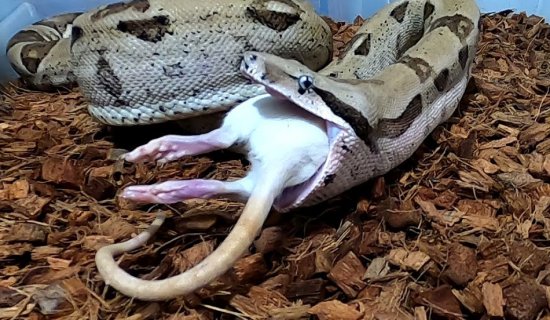
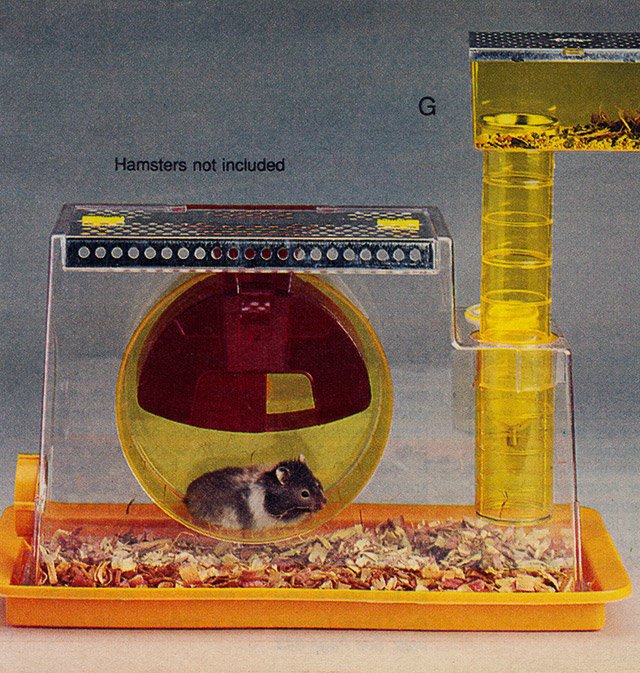
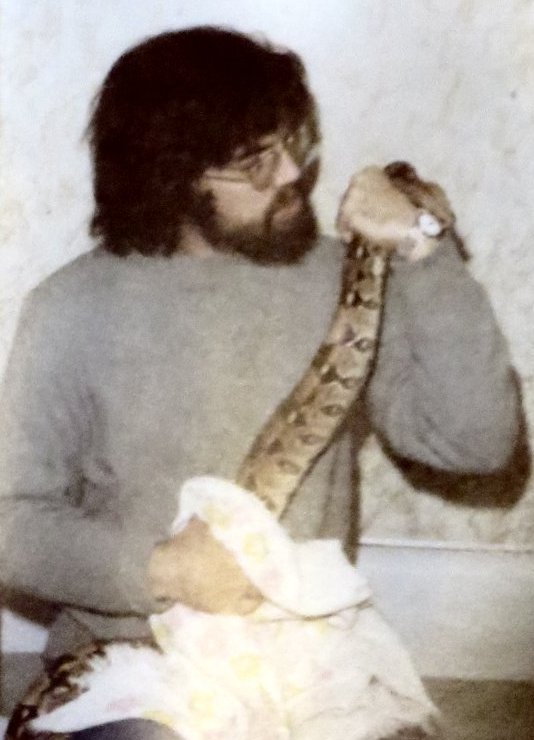

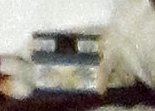
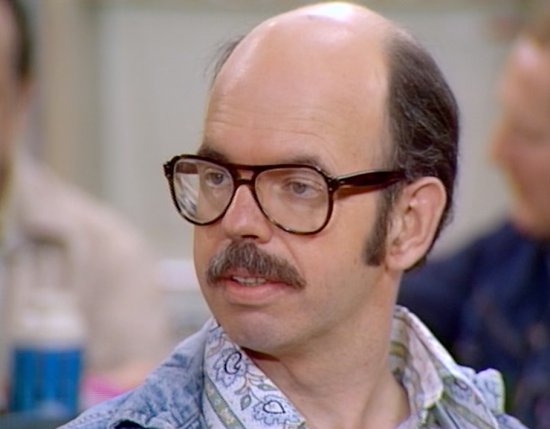

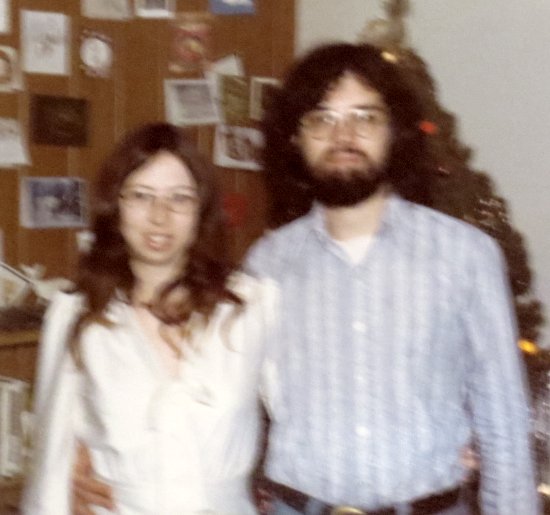
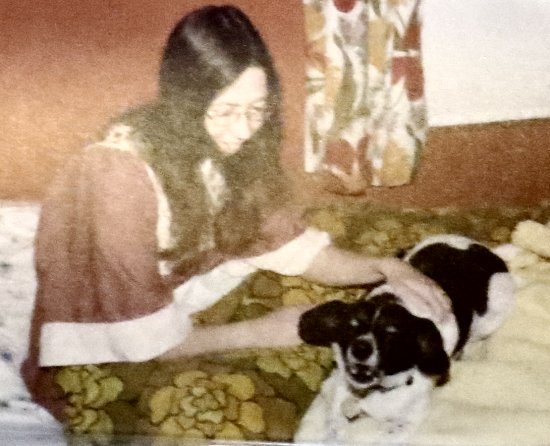
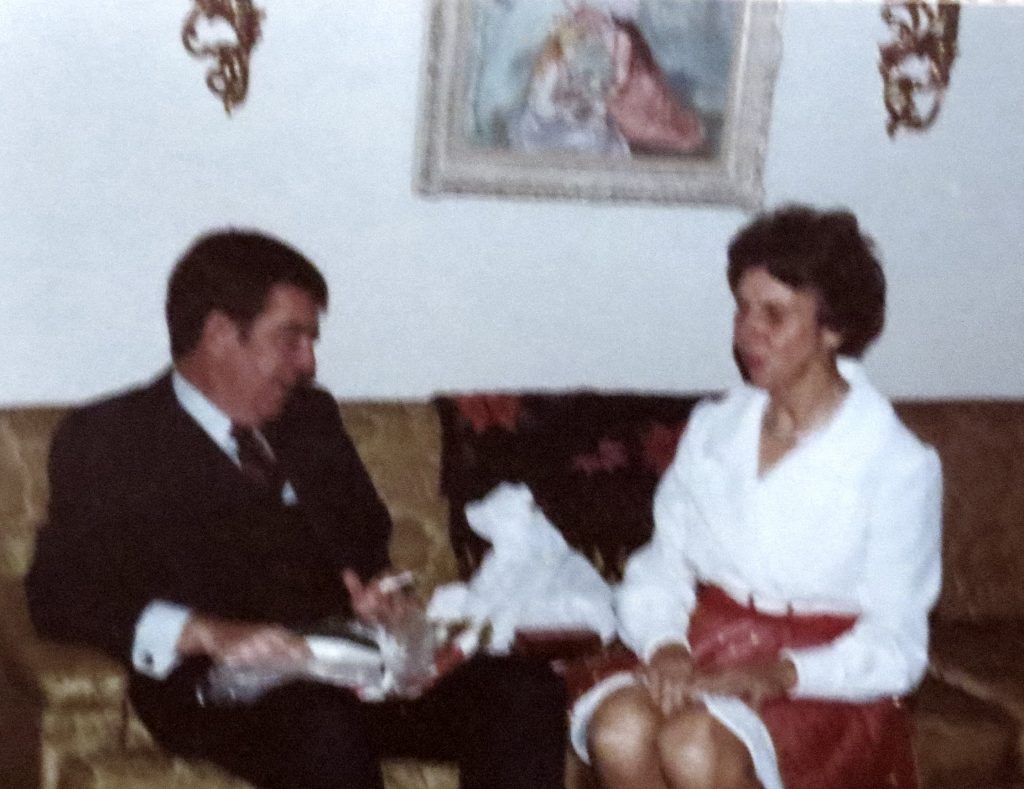
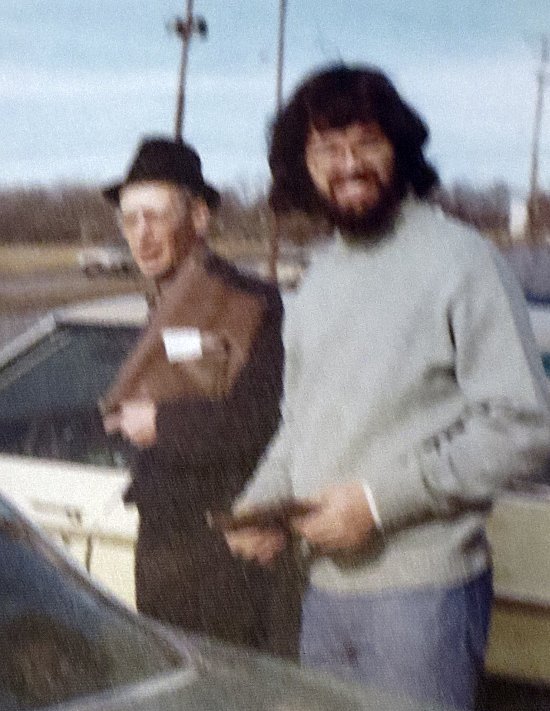
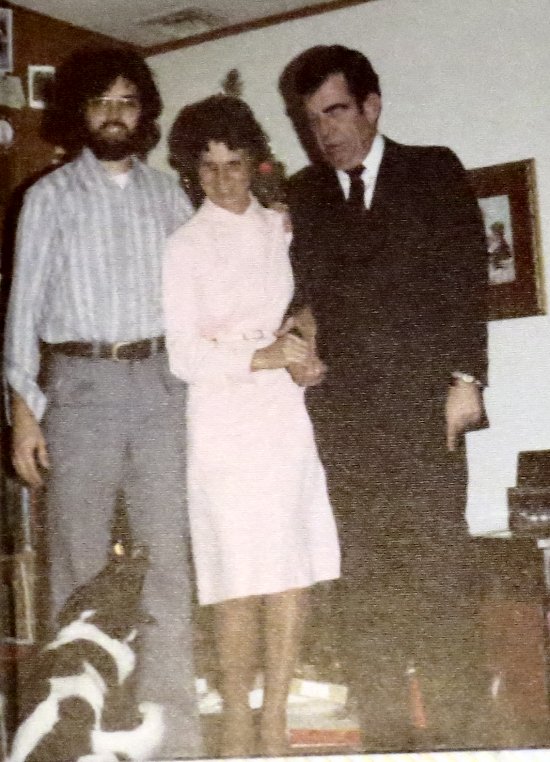

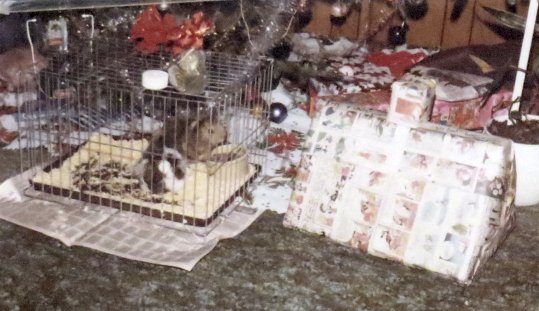
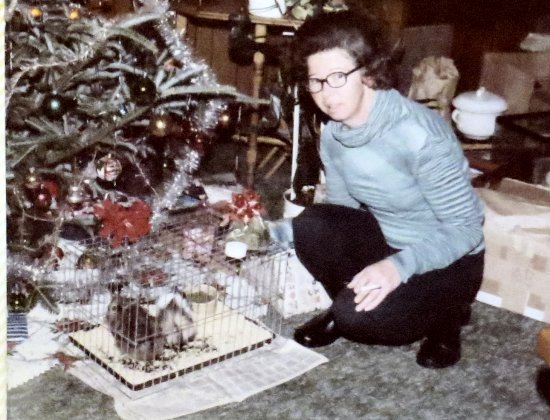
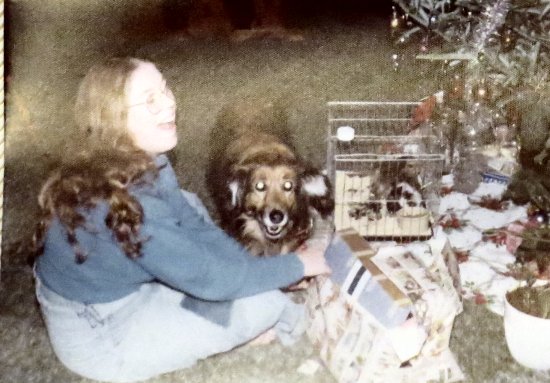
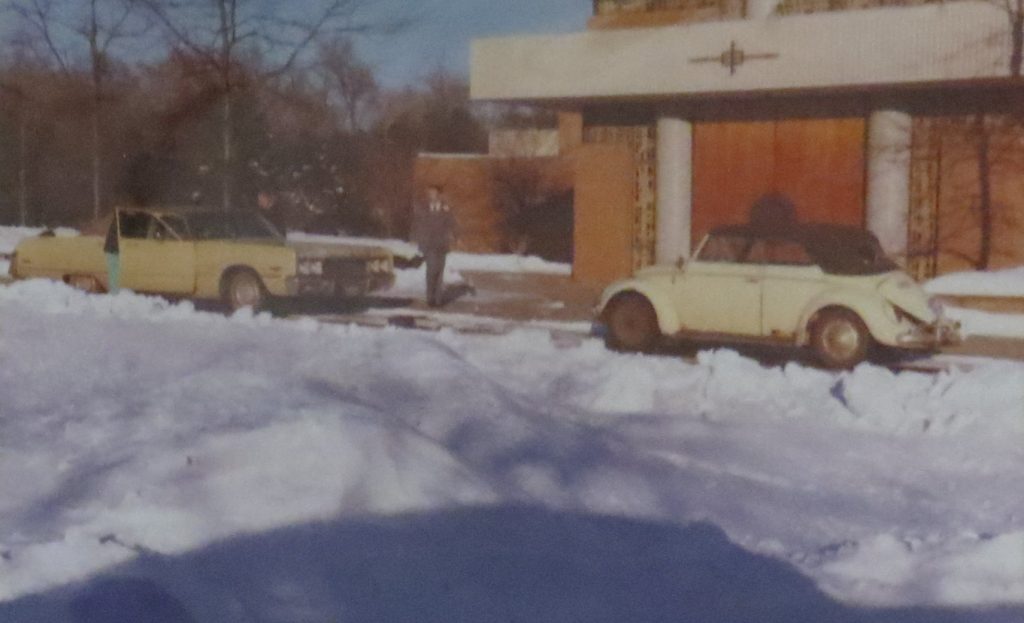
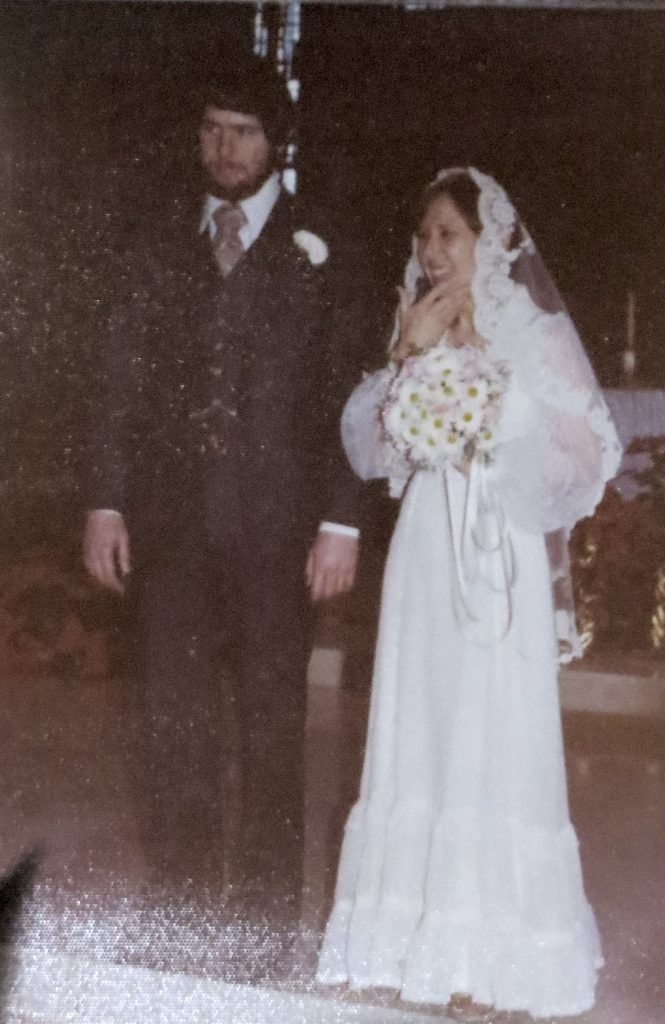
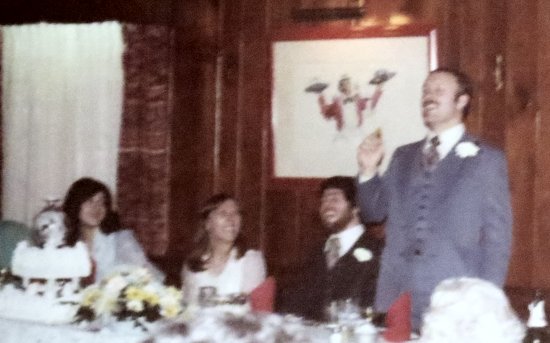
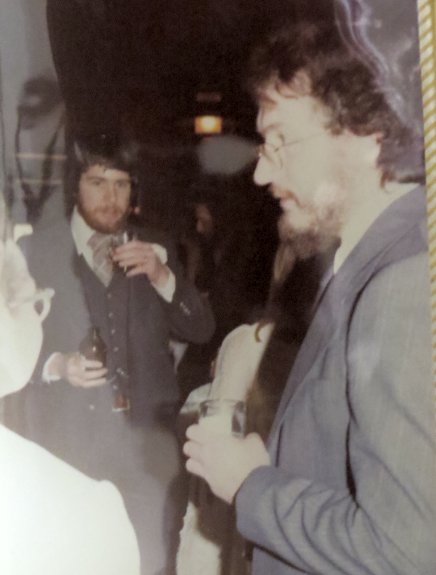
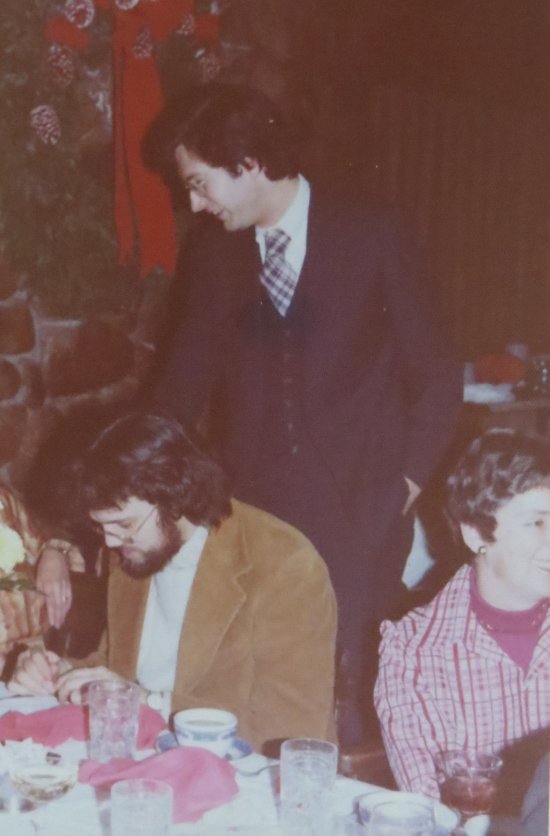
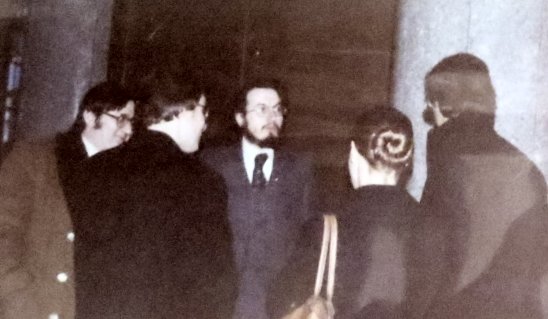
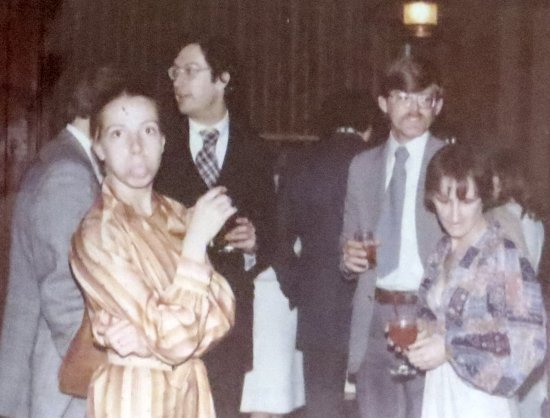
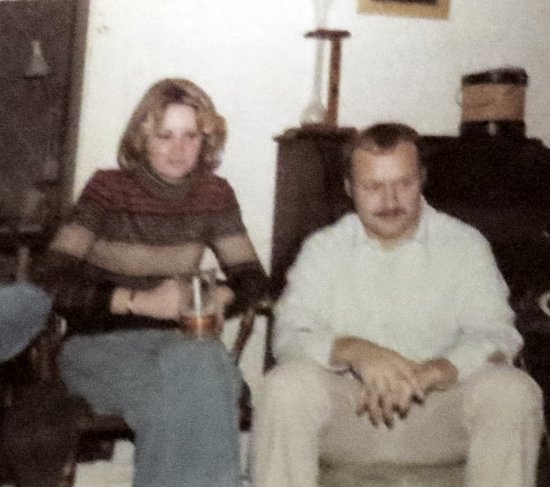
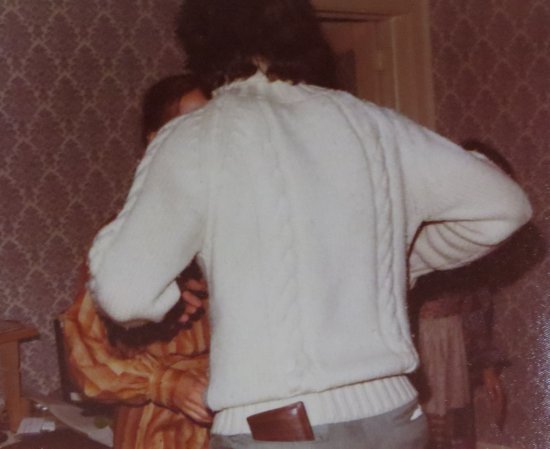
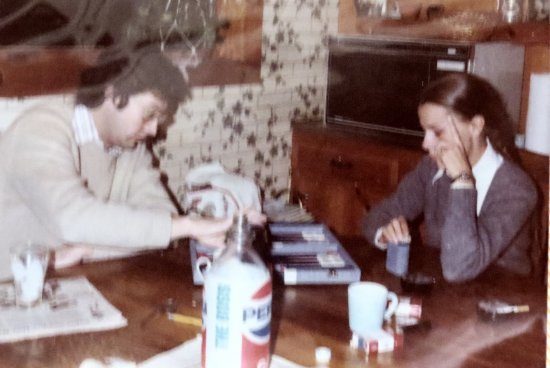





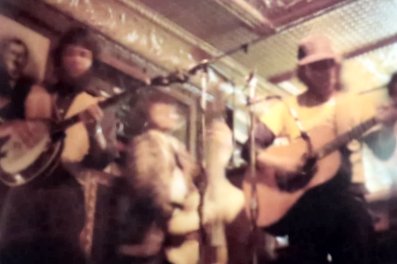
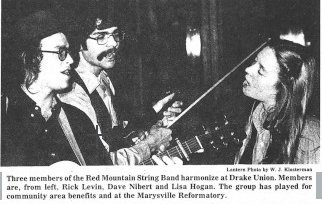
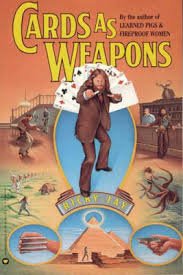
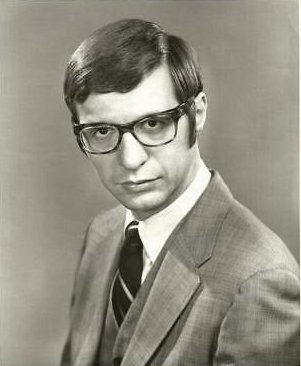
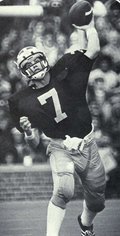
Pingback: 1985-1999 The Lisellas | Wavablog